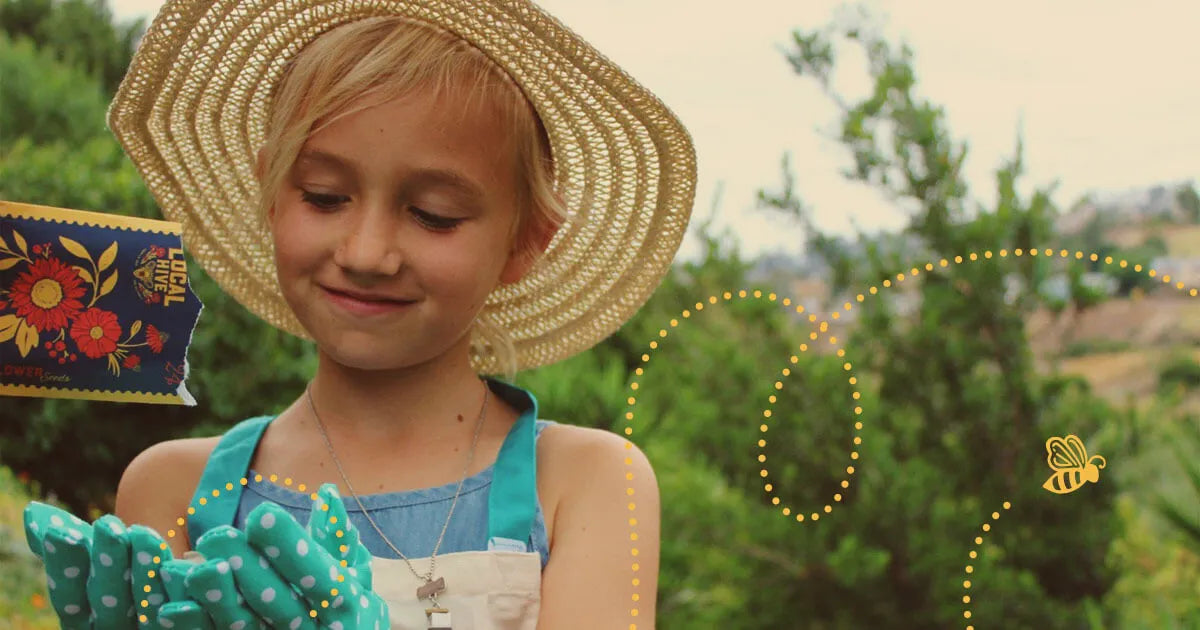Pollinator Awareness Week 2020
Honey Facts
June 22–28, 2020 is a big week in the honey world: Pollinator Awareness Week. We at Local Hive understand that not everyone gets to spend their days working with bees. So, let’s find out what the buzz is all about: what’s a pollinator, and why do they matter?
You’re a Pollinator
A pollinator is any living thing that carries plant pollen around from flower to flower, which helps plants reproduce. People, animals and insects usually don’t even realize when they’re pollenating. They’re just going about their lives, foraging or walking around, and happen to carry a little pollen along with them.
Honey bees are the world’s most preeminent professional pollinators. Beekeepers take them from farm to farm, letting them feast on acres of land where many of our favorite foods – like almonds, berries and squash – are in bloom. Once the bees help these plants reproduce, those fields are set to yield more than they ever could otherwise. In the US, American bees and beekeepers add around $20 billion of crops every year this way.
But bees aren’t the only pollinator that matters – just the one we depend on the most. There are the thousands of other species who play a part, including wasps, ants, bats, birds, rodents, monkeys and even the much-maligned “murder hornets”.
What’s Plaguing the Pollinators?
Humans are part of an invisible war on pollinators. When we selectively kill certain species of plants and animals – say, with insecticide, herbicide or weed killer – there are countless side effects that we can’t predict. This NPR interview with USDA entomologist Sammy “Doctor Buggs” Ramsey breaks down how these side effects threaten bees.
– When bees feed on only one crop, they don’t get a balanced diet. It’s like trying to live on potatoes alone; you won’t die, but you won’t be healthy. Weeds and wildflowers are valuable parts of their diet.
– Seemingly harmless pesticides can end up in a plant’s nectar and pollen, affecting bees in ways we can’t predict.
– Parasites like varroa mites destroy bee colonies from the inside out. Beekeepers the world over are studying ways to make their colonies resilient to this deadly, rapidly reproducing pest.
And that’s just apis mellifera. Just one species of one pollinator. All of them face unique threats. If many of our pollinators are facing extinction, where does that leave us?
The End of the World as We Know It
A little alarmist, sure, but pollinators tie our world together. They’re a key connector in most every ecosystem, helping to clean the air, create rich soil, prevent severe weather and support wildlife. While we humans love honey bees because they help us make dinner, more than 75% of flowering plants need pollinators. Without them, they wouldn’t be able to reproduce, animals wouldn’t be able to eat them, and countless ecosystems would be thrown out of whack.
Do Your Part for Pollination
Year-round, we partner with our friends over at PACE– that’s Pollinator Awareness through Conservation and Education – to do our part for pollinators. Part of every purchase of our raw & unfiltered honey goes to PACE and supports their mission of restoring habitats for our little heroes.
PACE is organized by the newly reopened Butterfly Pavilion in Westminster, Colorado. If you’d like to see 7000+ pollinators of the non-buzzing variety, pay them a visit. Right now, they’re in dire need of support, having lost more than $2 million in revenue due to COVID-19. Making a donation right now will help them conserve our precious pollinators – and our planet – for decades to come.

